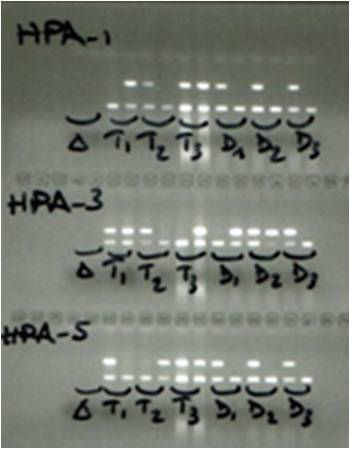|
Introduction
Each individual is charaterized by his/her own blood group. Various blood groups are grouped into systems, the main one being the ABO system, Rhesus and Kell systems.
Platelet grouping is mainly performed, for pregnant women, if there are anti-platelet antibodies in their system. Platelet grouping is used to prevent the fetomaternal platelet incompatibilities. It means the fetus can be suffering from a thrombocytopenia (It is a disease caused by a lack of platelet in the fetus).
At EFS Lyon, platelet grouping is perfomed according to the Polymerase Chain Reaction with Sequence Specific Primers (PCR SSP) method.
This method is a qualitative analytical process. The determination of platelet alleles (HPA-1a and b, HPA-2a and b, HPA-3a and b, HPA-4a and b, HPA-5a and b, HPA-6a and b, HPA-15a and b) is performed on DNA (deoxyribonucleic acid) extracted from genomic blood leukocytes (white blood cells).
At the laboratory, systems HPA-1, HPA-3 and HPA-5 are the only ones determined daily.
Experimental conditions
To achieve the three donors platelet grouping, several steps are necessary:
- The DNA extraction, contained in the donor’s leukocytes
- The DNA amplification, performed thanks to a device called a thermal cycler apparatus. The DNA undergoes a succession of thirty cycles of three steps: the denaturation, the annealing and the extension that allow the rapid DNA multiplication.
- Then, the amplification products (called amplicons) are controlled on a gel consisting of agarose and some drop of ethidium bromide (BET) that allows the UV reading.
Results
The picture 1 shows the three donors platelet grouping results. Three systems were identified: HPA-1a and b, HPA-3a and b, HPA-5a and b.
For each system, two results lines and seven columns,Δ, T1, T2, T3, D1, D2 and D3 can be observed.
The first column (Δ) represents the water control which must be negative. The next three columns (T1, T2, T3) are the already known platelet grouping results. So we must obtain the results expected in order to validate the donors’ results. The last three columns (D1, D2, D3) are the three donors results.
For each column, in order to say the first line is positive, the second line must be as intense as the first one or a little less.
To conclude, we can see:
- donor 1 (D1) is:
HPA-1 a+, b- / HPA-3 a-, b+ / HPA-5 a+, b-
- donor 2 (D2) is:
HPA-1 a+, b- / HPA-3 a+, b+ / HPA-5 a+, b-
- donor 3 (D3) is:
HPA-1 a+, b- / HPA-3 a+, b- / HPA-5 a+, b-
Conclusion
To conclude, the three donors platelet grouping results are unattractive and the donors platelet will therefore not be selected as platelet control. Indeed, the three donors have the most common platelet grouping in France, with the HPA-1 a+, b- and HPA-5 a+, b- representing approximately 98% of the French population.
|
|

The three donors platelet typing results obtained by the PCR SSP method
|



